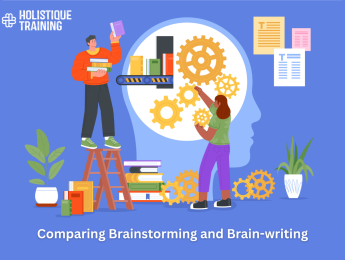- Table of Contents
- 1. Introduction:
- 2. Traditional Fraud Detection Methods and Their Limitations
- Rule-Based Systems
- Manual Review
- High False Positives
- 3. How AI Transforms Fraud Detection
- 4. Key AI Techniques Used in Fraud Detection
- Machine Learning (ML) and Pattern Recognition
- Deep Neural Networks (DNN)
- Behavioural Analytics
- Natural Language Processing (NLP)
- 5. Benefits of AI-Powered Fraud Detection
- Reduced False Positives
- Real-Time Fraud Detection
- Improved Customer Experience
- Cost Savings
- 6. Challenges and Risks of Using AI in Fraud Detection
- Biased or Corrupted Data
- Adversarial Attacks
- Privacy and Compliance Issues
- 7. Real-World Examples and Case Studies
- 8. Future Trends in AI and Fraud Prevention
- Generative AI
- Integration with Blockchain
- Evolving Regulatory Frameworks
- 9. Conclusion: Towards Smarter, Safer Financial Systems
1. Introduction:
Financial fraud has become one of the most pressing challenges for the global economy in the 21st century, escalating in both scale and sophistication. With the rapid digitization of financial services, the avenues for fraudulent activity have multiplied. Online banking, mobile payments, cryptocurrency exchanges, and cross-border transactions have made it easier than ever for fraudsters to exploit vulnerabilities. According to the Association of Certified Fraud Examiners (ACFE), organizations lose an average of 5% of their annual revenue to fraud, which translates to over $4.7 trillion globally. This staggering figure underscores the immense economic and social consequences of unchecked fraud.
At the same time, customer expectations for convenience and instant transactions leave little room for traditional, slower detection methods. Financial institutions — whether large multinational banks, regional credit unions, or fintech startups — face mounting regulatory scrutiny and fierce competition, forcing them to balance security with customer satisfaction. As fraudsters deploy advanced tactics such as phishing campaigns, synthetic identities, and account takeovers, the defensive tools of yesterday are no longer sufficient.
This evolving threat landscape has created an urgent need for smarter, faster, and more adaptive approaches to fraud prevention. Artificial Intelligence (AI) stands out as a revolutionary solution, offering financial institutions powerful capabilities to not only detect fraud in real-time but also to predict and prevent it proactively. AI enables institutions to analyze massive datasets efficiently, uncover hidden patterns, and respond to emerging risks with unparalleled agility.
2. Traditional Fraud Detection Methods and Their Limitations
Rule-Based Systems
For decades, the backbone of fraud detection in financial institutions was the rule-based system. These systems depend on predefined rules — often created by compliance officers — to trigger alerts for potentially suspicious transactions. For example, a payment above a certain threshold, a withdrawal in a foreign country, or a series of rapid transactions might all set off alarms.
While these systems are easy to implement and transparent to regulators, they suffer from rigidity. Fraudsters quickly learn the rules and adapt their techniques to evade detection, exploiting loopholes that rules fail to cover. Furthermore, rule updates are manual and reactive, making it difficult to keep up with the rapid evolution of fraud tactics.
Manual Review
In conjunction with rule-based alerts, human analysts have historically played a critical role in confirming or rejecting flagged transactions. This manual review process involves inspecting account histories, contacting customers, and investigating anomalies.
Although human judgment is valuable — particularly for complex cases — this method is labour-intensive, error-prone, and slow. With millions of transactions occurring every day, financial institutions cannot feasibly scrutinize each alert, resulting in a backlog of cases and delayed responses. Fraudsters exploit these delays to execute and cover their tracks before detection.
High False Positives
One of the most significant drawbacks of traditional methods is their high false-positive rate. Because rules tend to err on the side of caution, they often misclassify legitimate transactions as fraudulent. This not only wastes investigative resources but also disrupts the customer experience — freezing accounts, declining genuine payments, or requiring unnecessary verification steps.
These false alarms can harm a financial institution’s reputation, reduce customer trust, and even lead to churn. As fraud schemes grow more sophisticated, the inadequacy of traditional methods becomes more evident, calling for an approach that can handle complexity without alienating customers.
3. How AI Transforms Fraud Detection
Artificial Intelligence introduces a paradigm shift in how financial institutions combat fraud. Unlike static rule-based systems, AI dynamically learns from vast datasets, allowing it to detect nuanced patterns of fraud that would be invisible to traditional systems or even human analysts.
By applying techniques such as machine learning, neural networks, and behavioural analytics, AI can adapt to emerging threats in real-time, staying ahead of fraudsters who constantly innovate.
AI’s core advantage lies in its ability to process and analyze enormous volumes of structured and unstructured data at lightning speed. For instance, it can simultaneously evaluate transaction histories, geolocation data, device fingerprints, and customer behaviour to assess risk — a task far beyond human capability. This not only improves accuracy but also enables real-time decisions, blocking fraudulent activities before they can be completed.
A McKinsey & Company study illustrates the impact of AI: it can reduce false positives by up to 50% and improve fraud detection rates by as much as 90%, freeing up analysts to focus on the most complex and high-risk cases. Similarly, a Harvard Business Review article highlights how AI-driven systems enable real-time, intelligent decision-making — a critical capability in an environment where every second counts.
These improvements not only help institutions mitigate financial and reputational losses but also allow them to deliver seamless customer experiences, maintaining trust and satisfaction in an increasingly competitive industry.
4. Key AI Techniques Used in Fraud Detection
Machine Learning (ML) and Pattern Recognition
Machine Learning is the backbone of modern fraud detection systems. ML models are trained on vast datasets containing examples of both legitimate and fraudulent transactions. Over time, they learn to distinguish subtle differences between the two.
For example, an ML algorithm might learn that a customer typically makes purchases during business hours near their home but suddenly sees an unusual transaction at 3 AM overseas. Such anomalies trigger investigation without needing a rigid rule.
Pattern recognition allows the system to spot emerging fraud tactics by identifying correlations and clusters that humans might miss, making detection both proactive and adaptive.
Deep Neural Networks (DNN)
Deep Neural Networks, inspired by the human brain’s interconnected neurons, excel at detecting complex, multi-dimensional fraud scenarios. DNNs can analyze thousands of variables simultaneously, uncovering hidden relationships in the data.
This makes them particularly effective in spotting fraud that involves multiple steps, such as synthetic identity fraud, where fraudsters create entirely new identities using real and fake information. DNNs are also resilient to noisy or incomplete data, increasing their reliability in real-world applications.
Behavioural Analytics
Unlike traditional methods that focus on the transaction itself, behavioural analytics observes the customer’s overall behaviour over time. By establishing a unique behavioural fingerprint for each user — such as typing speed, device usage, and transaction patterns — AI can detect deviations that indicate fraud.
For instance, if a customer suddenly logs in from a different device, at an unusual time, and requests a large transfer, the system can flag it even if each individual action appears normal in isolation. Behavioural analytics thus provides a powerful second layer of defence against account takeovers and insider threats.
Natural Language Processing (NLP)
Many fraud schemes exploit unstructured data, such as application forms, emails, or customer chats. NLP enables AI systems to understand and analyze human language, detecting deception or inconsistencies.
For example, NLP can scan loan applications for suspicious patterns in responses or flag phishing emails by recognizing malicious language cues. In contact centres, it can even monitor real-time conversations to identify social engineering attempts.
5. Benefits of AI-Powered Fraud Detection
Reduced False Positives
One of the most significant benefits of AI in fraud detection is its ability to dramatically reduce false positives — unnecessary alerts triggered by legitimate transactions. Traditional systems often flag normal customer behaviour as suspicious because it does not fit rigid rules, such as spending above a fixed threshold or making purchases abroad.
AI learns each customer’s unique behavioural patterns — including preferred times of day, transaction sizes, and locations — and can distinguish true fraud from unusual but legitimate activity.
According to a McKinsey study, AI can reduce false positives by up to 50%, freeing investigators to focus on real threats and improving efficiency.
Real-Time Fraud Detection
In the fast-paced world of digital payments, timing is critical. AI systems work in real time, enabling institutions to stop fraudulent transactions before funds leave an account.
Unlike traditional approaches, which may only identify fraud after the fact, AI analyzes multiple data points — such as device, location, transaction history, and behaviour — instantly, allowing for immediate action.
This ability is vital in environments like e-commerce and mobile banking, where fraud can occur in seconds.
Improved Customer Experience
When fraud detection is inaccurate or slow, customers suffer from unnecessary account freezes, delayed payments, and frustration.
AI minimizes these issues by reducing false positives and speeding up transaction approvals, ensuring seamless service and fewer interruptions.
This improved experience builds customer trust and loyalty and enhances the institution’s reputation for both security and service.
Cost Savings
AI reduces costs by automating much of the fraud detection process, lowering the need for large investigative teams, and minimizing losses from undetected fraud.
By decreasing unnecessary alerts and focusing resources where they matter most, institutions can save significantly while achieving better outcomes. AI is therefore not only effective but also a sound economic investment.
6. Challenges and Risks of Using AI in Fraud Detection
Biased or Corrupted Data
AI models depend on the data they are trained on. If this data is biased, incomplete, or inaccurate, the model may make poor decisions — for example, unfairly targeting certain customers or failing to detect certain fraud patterns.
If historical data underrepresents fraud in specific demographics or transaction types, the AI may underperform in identifying these threats. Ensuring data quality and diversity is therefore critical.
Adversarial Attacks
Fraudsters are becoming more sophisticated, deliberately designing transactions to evade AI detection — a tactic known as adversarial attacks.
For instance, they may craft transactions that appear normal to the AI but are actually fraudulent. Institutions need to regularly test their systems against such attacks and update models to maintain resilience.
Privacy and Compliance Issues
Because AI requires large volumes of sensitive customer data, privacy and regulatory compliance are major concerns. Financial institutions must adhere to laws like the EU’s General Data Protection Regulation (GDPR) to avoid fines and reputational harm.
Striking a balance between effective fraud detection and protecting customer privacy requires investment in techniques such as data anonymization and robust compliance monitoring.
Comparison Table: Benefits vs. Challenges of AI in Fraud Detection
Benefits | Challenges |
Reduced false positives | Biased or corrupted data |
Real-time fraud detection | Adversarial attacks |
Improved customer experience | Privacy and compliance issues |
Cost savings | Dependence on high-quality data |
7. Real-World Examples and Case Studies
Many financial institutions around the world have already demonstrated the effectiveness of AI in enhancing their fraud detection capabilities, showcasing measurable improvements in both operational efficiency and customer protection.
One notable example is HSBC, which adopted an AI-driven fraud prevention system to address the high rate of false positives that burdened its operations. By implementing AI, HSBC was able to reduce false positives by 60%, freeing up investigation teams to focus on genuinely suspicious activities and accelerating the review process. This initiative not only improved the accuracy of fraud detection but also optimized investigative resources, saving both time and costs (source).
Similarly, PayPal, which handles billions of transactions every day across its global platform, has been at the forefront of applying machine learning to fraud detection. Leveraging vast amounts of data from customer activity, PayPal continuously refines its algorithms to identify even the most subtle fraudulent patterns in real-time. This has allowed the company to protect its users effectively while maintaining the speed and convenience expected in digital payments.
A LinkedIn report further underscores the widespread impact of AI in this domain. According to the report, financial institutions that have deployed AI-based fraud detection systems have seen improvements of up to 70% in detecting fraudulent transactions compared to traditional methods. This illustrates AI’s powerful role in bolstering operational security and reducing financial losses.
These real-world successes confirm that AI is no longer a theoretical solution but a proven, essential tool in the fight against financial fraud, with measurable benefits in both efficiency and effectiveness.
8. Future Trends in AI and Fraud Prevention
As fraud tactics continue to evolve, so too does the technology designed to combat them. Several emerging trends are shaping the future of AI-driven fraud prevention, promising even more robust and sophisticated defences.
Generative AI
Generative AI is an emerging technology capable of creating realistic, simulated fraud scenarios to test the resilience of detection systems. By generating diverse and complex attack patterns, these models help institutions proactively identify vulnerabilities in their defences and strengthen them before real-world attackers can exploit weaknesses. This predictive capability enables financial institutions to stay ahead of fraudsters, rather than simply reacting to past threats.
Integration with Blockchain
The combination of AI and blockchain technology holds great promise for fraud prevention. Blockchain’s immutable and transparent ledger makes tampering with records exceedingly difficult, while AI can analyze the blockchain data for irregularities in real-time.
Together, AI and blockchain create a system where transactions are not only harder to manipulate but also easier to audit and verify.
Evolving Regulatory Frameworks
As AI becomes an integral part of fraud prevention, regulators are adapting legal and ethical frameworks to govern its use responsibly. New guidelines are being introduced to ensure that AI systems are transparent, fair, and non-discriminatory. Financial institutions must keep pace with these evolving regulations to remain compliant while leveraging the full potential of AI. This includes implementing explainable AI models, maintaining data privacy standards, and demonstrating accountability in their decision-making processes.
These future trends indicate that AI’s role in fraud prevention will only grow stronger, offering more predictive, transparent, and resilient solutions to protect financial systems in the years to come.
9. Conclusion: Towards Smarter, Safer Financial Systems
AI has emerged as a game-changer in the fight against financial fraud. Its ability to detect complex patterns, adapt to new threats, and operate in real-time provides financial institutions with a critical edge.
While challenges like data bias, adversarial attacks, and compliance must be carefully managed, the benefits — including reduced fraud, improved efficiency, and enhanced customer trust — far outweigh the risks.
To stay ahead of increasingly sophisticated fraudsters, financial institutions should invest in advanced AI-driven solutions and integrate them strategically into their fraud prevention strategies. By doing so, they can build smarter, safer, and more resilient financial systems for the future.
For professionals and decision-makers looking to explore how AI can revolutionize their organization’s fraud prevention, consider enrolling in specialized courses or consulting with industry experts to gain hands-on insights and stay at the forefront of innovation.
























